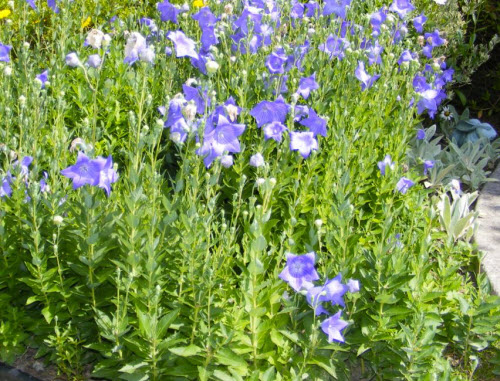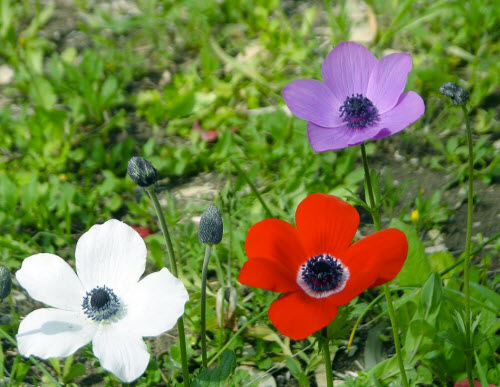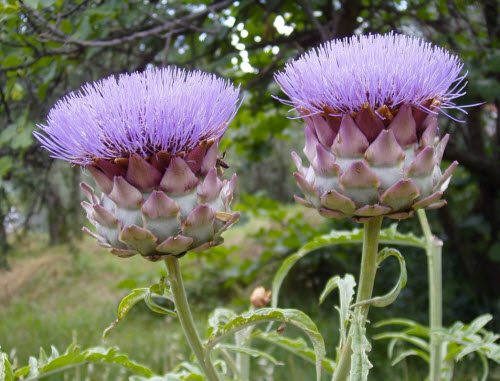Story of Day :
We can enjoy the beauty of the colors by caring for flower plants at home, both in the yard and indoors. A purple flower variety is one of them.
Adding purple flower plants to your yard will give it a colorful and one-of-a-kind look all year. Some purple flowers have unusual shapes as well.
So, what are the purple flowers that can be used to beautify the home? Here’s the list.
Contents
- 1 Types of Purple Flowers
- 1.1 1. Teasel
- 1.2 2. Verbena
- 1.3 3. Bellflower
- 1.4 4. Sweet Rocket
- 1.5 5. Lavender
- 1.6 6. Balloon Flower
- 1.7 7. Alliums
- 1.8 8. Catmint
- 1.9 9. Cosmos
- 1.10 10. Anemone
- 1.11 11. Bee Orchid
- 1.12 12. Wild Hyacinth
- 1.13 13. Foxglove
- 1.14 14. Mountain Cornflower
- 1.15 15. Purple Calla Lily
- 1.16 16. Candytuft
- 1.17 17. Hardy Geranium
- 1.18 18. Columbine
- 1.19 19. Globe Artichoke
- 1.20 20. Gladiolus
- 1.21 21. Hydrangea
- 1.22 22. Heliotrope
- 1.23 23. Lisianthus
- 1.24 24. Russian Sage
- 1.25 25. Liatris
Types of Purple Flowers
1. Teasel
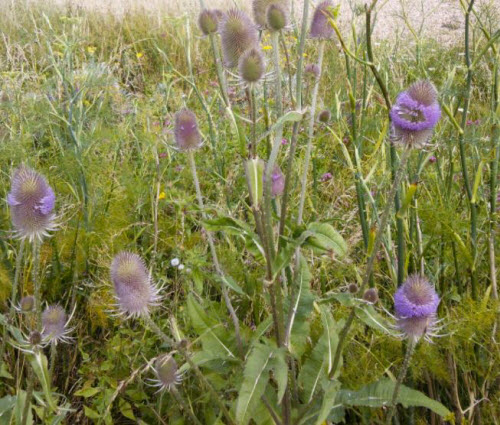
Teasel is the native purple flower of England that blooms only once every two years. These flowers have tall spikes, the flower head looks like a purple brush, and it attracts butterflies and bees.
In general, these flowers can be found in the wild or at the back of a garden border.
2. Verbena
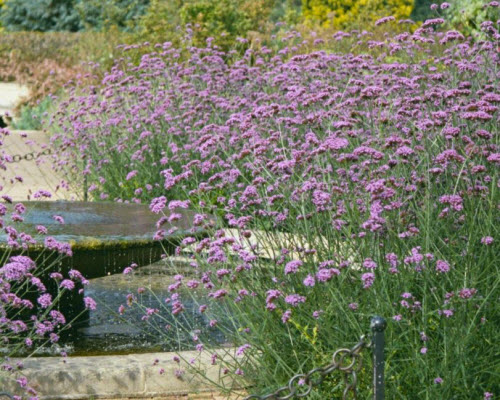
Verbena is a good choice if you want small purple flowers that bloom all summer. A single stem contains a plethora of lovely flowers.
Many people use these flowers in flower arrangements, but they also look lovely when dried. Verbena is not only beautiful but
it is also known to help with gum disease and earaches. These flowers thrive in full sun and moist soil.
3. Bellflower
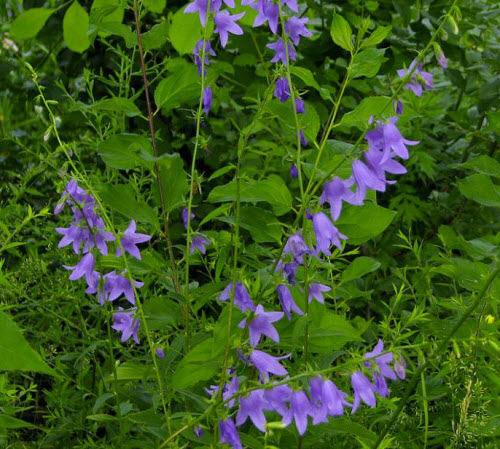
These flowers, as the name suggests, blooms in the shape of a bell. Bellflower comes in two varieties: white and purple, with purple being the more common.
These flowers thrive in full sun and dry soil. Bellflowers can be grown in either partial shade or full sun in dry soil.
4. Sweet Rocket
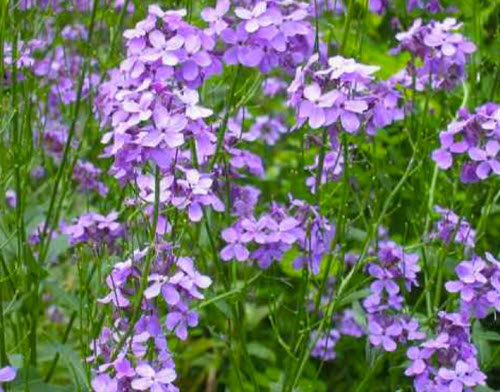
Aside from teasel, another lovely biennial flower is Sweet Rocket. These flowers come in two varieties: white and purple.
Sweet rocket emits a fragrant night scent. These flowers, known scientifically as Hesperis Matrionalis, can thrive in direct sunlight or partial shade.
5. Lavender

You must be familiar with lavender flowers, which are purple flowers with a strong aroma. Lavender’s aroma can be retained even after the flowers have dried.
Another advantage is that lavender can be used as a natural mosquito repellent.
Plant lavender in full sun with moderately dry soil if you want to grow it. Lavender seeds spread quickly, resulting in rapid growth, and you must keep cutting them to keep your garden tidy.
6. Balloon Flower
It is a versatile plant that can be grown in both cold and dry climates. At first glance, this plant looks similar to a bellflower because it belongs to the same family.
Perennial flowers are another name for balloon flowers because they live for a long time. These flowers naturally repulse deer.
7. Alliums
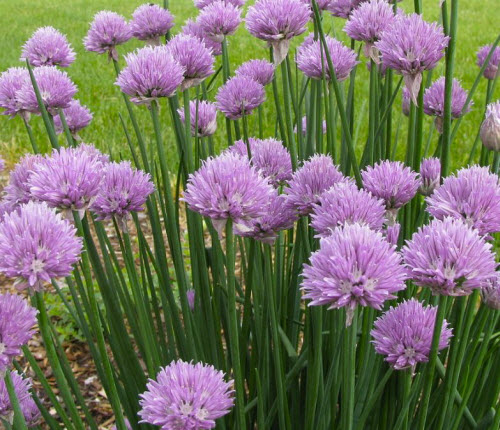
These flowers come in three different colors: purple, white, and pink. In addition to its unusual shape, Allium can repel deer.
If any Allium bulbs bloom, the squirrels will never try to dig them up. It is, however, the ideal flower for butterflies and bees. Alliums can tolerate both partial shade and full sun, as well as dry soil.
8. Catmint
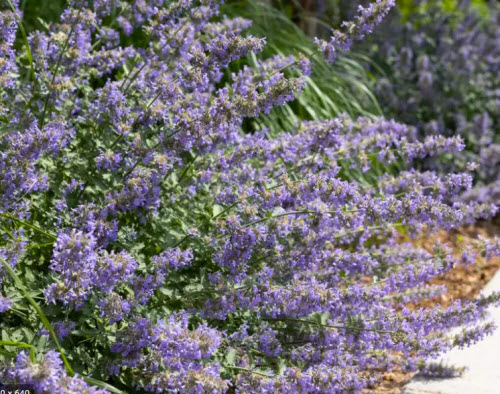
If you have a cat, this is the plant for you. This is because catmint is related to catnip but has more attractive purple flowers.
You can cut the flowers, and your cat can eat the leaves. So, this is a plant that will benefit both you and your cat. If you want to grow it, place it in full sun and dry soil.
9. Cosmos
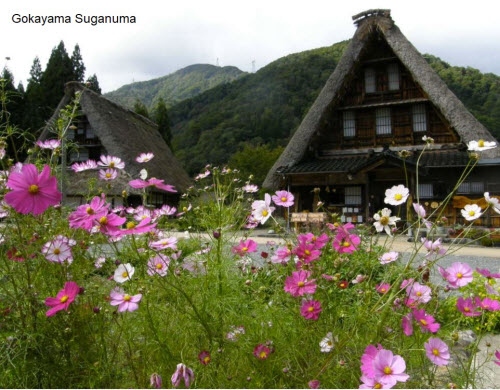
When you look at the Cosmos, it looks like a daisy. Although this is a wild plant, it has lovely flowers and colors. Cosmos can survive the summer and thrive even in poor soil conditions. These flowers grow very fast because the more you cut them, the faster and taller it grows.
10. Anemone
These purple flowers do not live on the seafloor. On the other hand, this one anemone lives in rock gardens or anywhere and blooms all summer.
Anemones can be grown in partial shade in moist soil. Anemones take a long time to adapt and grow, but once they do, they spread quickly.
11. Bee Orchid
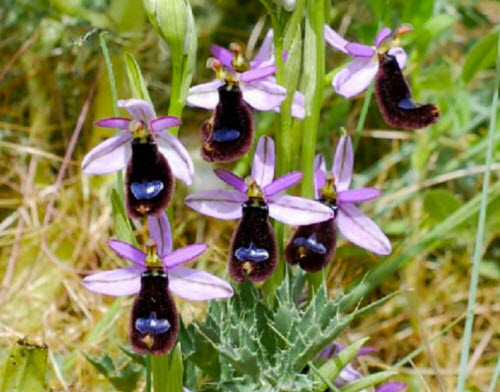
These flowers appear to have a small fuzzy bee in their center. That is why these flowers are known as Bee Orchid.
Orchids can grow well outside in some areas, but the best environment for orchids is one you can control well.
You can grow this orchid in full sun or partial shade. Then, moist soil is required so that orchids can thrive and flower quickly.
12. Wild Hyacinth
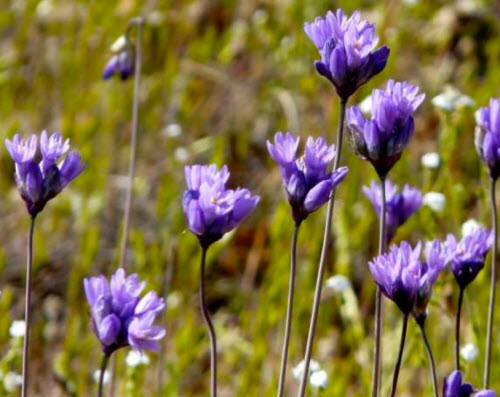
If you have a meadow, this is the flower to plant. These flowers also require very little maintenance, making it easier for you to care for them.
Pollinating bees are also attracted to hyacinth seeds. Plant these flowers in either partial shade or full sun, with moderately dry soil.
13. Foxglove
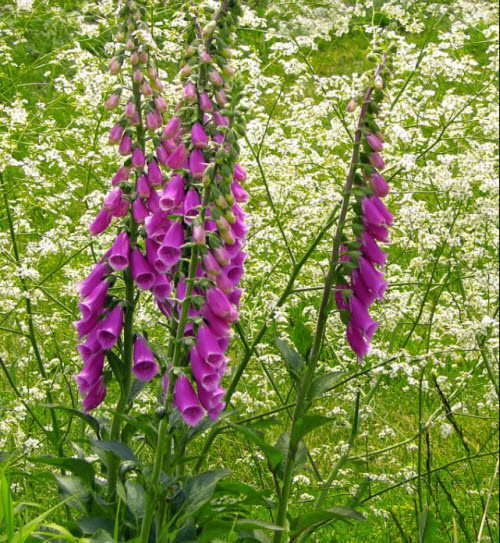
These are lovely flowers that bloom in the middle of summer and look lovely. Foxgloves have many small purple flowers on a single stalk.
However, despite its beauty, you must exercise caution and keep it away from children and pets.
If you have a heart condition, you should avoid these flowers. Because it contains glycosides, these flowers can be a dangerous poison.
14. Mountain Cornflower
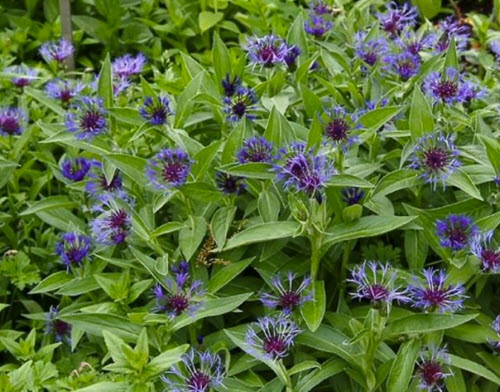
Centaurea Montana is the Latin name for these flowers, which grows in continental Europe’s mountain meadows and forests.
These flowers have large purple or dark blue flowers in color, lance-shaped leaves, and gray-green leaves. These flowers, which bees adore, bloom in early summer.
15. Purple Calla Lily
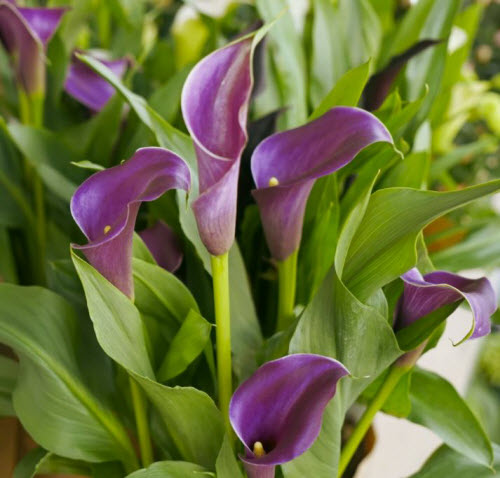
These are purple flowers that are well-known for their single petals. These flowers are commonly used on Easter, and you can give them to someone you care about.
These flowers are simple to grow both indoors and outdoors. As a result, you can plant it in both partial shade and full sun.
This lovely flower also requires moist soil to thrive.
Also, read about types of yellow flowers, white flowers, red flowers, black flowers, pink flowers.
16. Candytuft
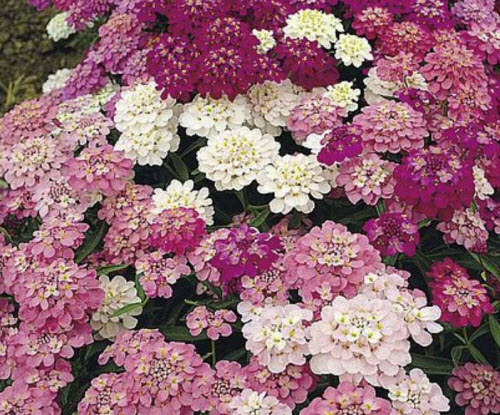
These flowers look like cotton candy, as the name suggests. Although the shape is unique and appealing, these flowers bunches should not be eaten.
These flowers look great in a rock garden next to slender, tall plants. This is one of those purple flowers that prefers full sun and dry soil.
17. Hardy Geranium
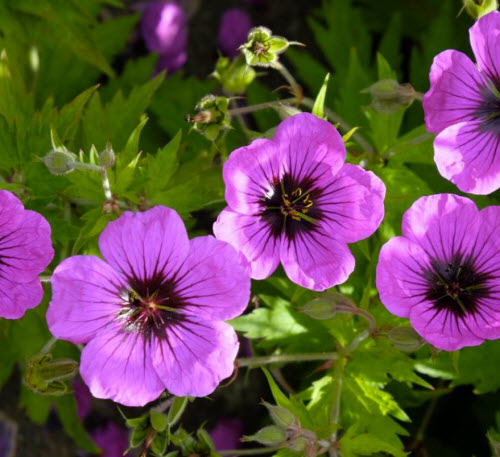
This is one of the purple saucer-shaped perennial border flowers. These flowers are stunning and can bloom for months.
Plant them in the shade if you want them to proliferate. Bees love geraniums because they have a long pollen and nectar season.
18. Columbine
You will undoubtedly see these flowers frequently because it blooms all year. Initially, however, these flowers only produced a few simple purple petals.
Then, in the center, white petals appear, and the leaves turn dark red. Hummingbirds are drawn to these flowers.
These flowers can be grown in either partial shade or full sun in moderately dry soil.
19. Globe Artichoke
The Latin name for these lovely flowers is Cynara Cardunculus. It is an annual plant with edible young flower heads.
From July onwards, one of these purple flowers blooms. Tall flowers stalk, thistle-like foliage, and striking silvery bearings distinguish these flowers.
20. Gladiolus
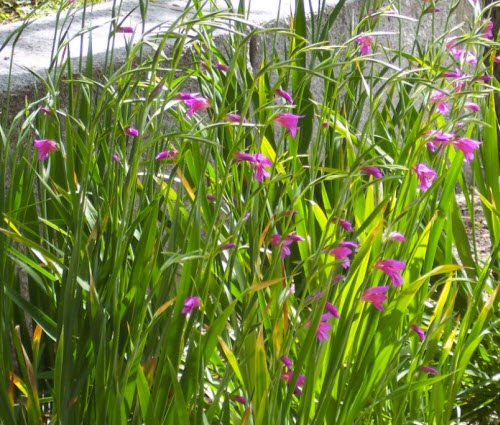
These flowers are ideal if you want flowers that bloom in a row on tall stems. Gladiolus has large flowers and can grow to be 6 feet tall.
These flowers come in various colors, including pink, yellow, orange, and the most beautiful, purple.
Plant these flowers in full sun with moderately dry soil.
21. Hydrangea

These flowers are unique in that it changes color depending on the pH level of the soil. If you want your hydrangeas to stay purple, keep the pH of the soil at 5.5.
Planting your hydrangeas in pots allows you to control the pH better. Then you can have purple flowers all year.
22. Heliotrope
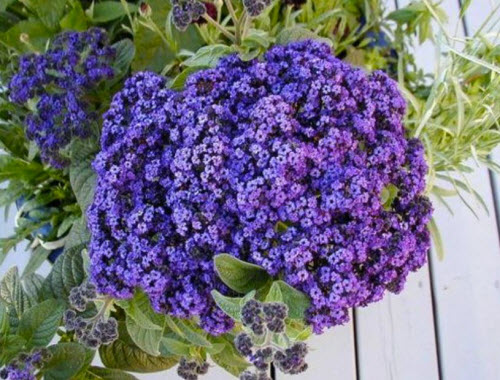
Heliotrope is a purple flower with a strong aroma that, like lavender, has a strong aroma. These flowers have the shape of a small star and grow in clusters. With its delicious and robust aroma, Heliotrope is popular among humans and bees.
These flowers will thrive if planted in partial shade or full sun with moist soil.
23. Lisianthus
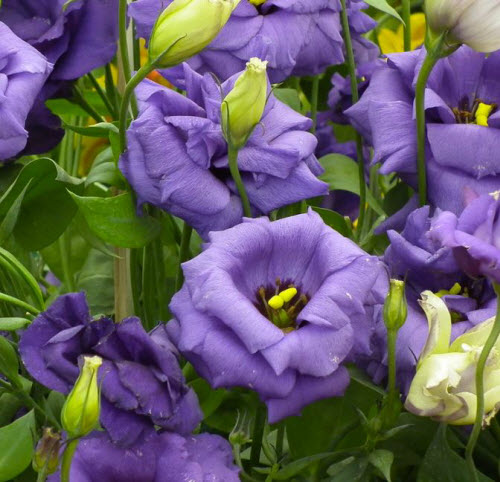
These flowers are also known as Texas bluebell. These flowers come in a variety of colors, including white and pink.
Because of their beauty, many people use these flowers in wedding bouquets.
These flowers represent rising above your surroundings because they can grow in the most inhospitable conditions.
24. Russian Sage
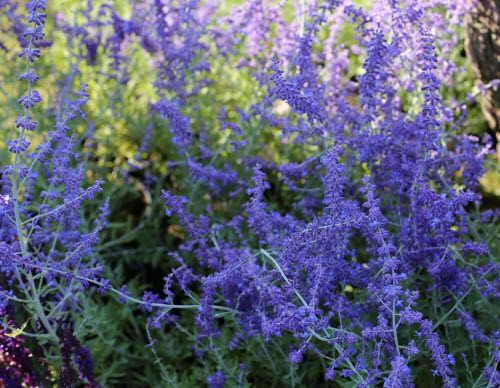
Perovskia atriplicifolia is the scientific name for these flowers. These purple flowers are found on sub-shrubs that bloom in late summer and early fall.
When in bloom, these flowers resemble lavender, but the stems are branched, and the flowers have a fragrant aroma.
25. Liatris
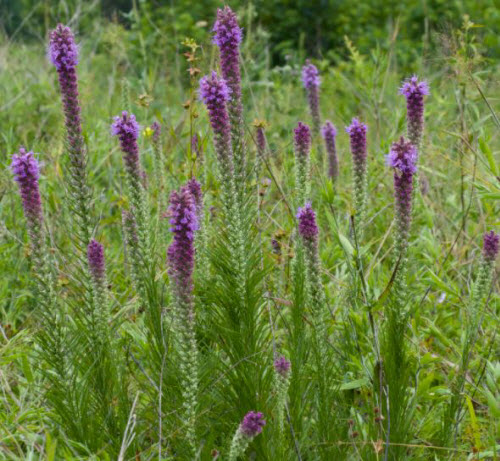
The flowers of this plant are spiky and range in height from 1 to 5 feet. Small, dense purple flowers will cover the entire stalk.
These flowers necessitate extra care at the start of their growth. However, if it has begun to grow and flower, you will find it very easy to care for it.
If you want to grow it, place it in full sun or partial shade with dry soil.
